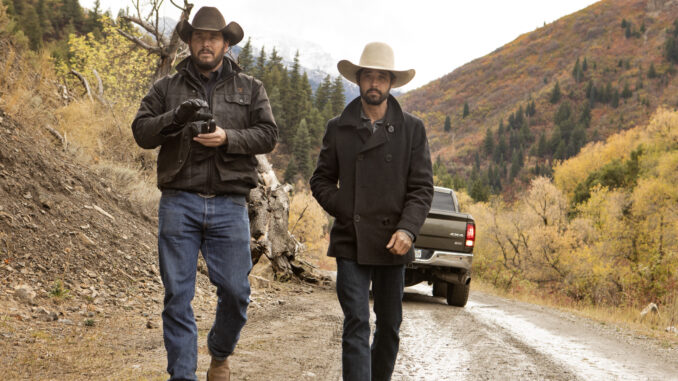
The Yellowstone Universe: A Tapestry Woven Through Time
The Yellowstone universe, a sprawling saga of land, legacy, and lineage, has captivated audiences with its raw depiction of the American West and the relentless struggle to preserve it. From the pre-WWI drama of 1923 to the contemporary anxieties of Yellowstone, the franchise meticulously stitches together a historical tapestry, showing how the past continues to haunt and shape the present. As we look ahead to the future beyond 2024, including the potential new spinoff, understanding this intricate historical continuum becomes crucial to appreciating the ongoing narrative.
The foundation of the Yellowstone universe lies not just in the Dutton family’s ownership of the land, but in the stories etched into its soil. 1923 serves as a visceral illustration of this brutal history. Jacob and Cara Dutton, the guardians of the Yellowstone Ranch during a period of unprecedented hardship, face drought, disease, and escalating conflict with both Native American tribes and ruthless land speculators. Their resilience, their unwavering commitment to survival, and their willingness to defend their claim at all costs, define the Dutton spirit. 1923 doesn’t just depict hardship; it reveals the genesis of the Dutton’s fierce protectiveness, a characteristic that will echo through generations. We see the establishment of the moral compass, albeit a deeply flawed one, that guides their actions. The seeds of mistrust towards the government, the constant threat from those seeking to exploit their land, and the inherent violence woven into the fabric of their lives – all of these themes are firmly planted in 1923.
The decades between 1923 and Yellowstone remain largely unexplored, hinting at a multitude of untold stories. We can surmise, however, that the Duttons continued to face challenges. The Great Depression, World War II, and the shifting social landscape of the 20th century undoubtedly impacted their lives and their ranching operations. Each generation would have grappled with its own unique set of pressures, forced to adapt and evolve while simultaneously upholding the traditions passed down by their ancestors. These intervening years likely solidified the Dutton family’s reputation, their wealth, and their powerful influence within Montana. They also likely deepened their understanding of the land, its vulnerabilities, and the importance of preserving its natural beauty, albeit often through questionable means.
Yellowstone, the flagship series, throws us into the contemporary conflict, where John Dutton III, played with weathered stoicism by Kevin Costner, embodies the culmination of generations of Dutton legacy. He fiercely guards his family’s ranch, now the largest contiguous ranch in the United States, against land developers, politicians, and Native American tribes seeking to reclaim their ancestral lands. The show masterfully juxtaposes the romanticized image of the West with the harsh realities of modern ranching, environmental concerns, and the complexities of contemporary politics. John’s actions, often morally ambiguous, are directly influenced by the history he has inherited. The distrust of outsiders, the willingness to use force, and the unwavering devotion to family are all echoes of Jacob and Cara’s generation. He’s a product of his lineage, burdened by the weight of the past and determined to secure the future of his dynasty.
The success of Yellowstone has paved the way for the expansion of the universe, with prequels like 1883 further enriching the Dutton family history. While 1883 doesn’t directly connect to the 1923 narrative, it demonstrates the arduous journey and the sacrifices made by the Duttons to reach Montana in the first place. This reinforces the idea that the Yellowstone Ranch is not just a piece of property, but the culmination of a century of dreams, struggles, and unwavering determination.
Looking ahead, the rumored new spinoff presents an exciting opportunity to further explore the Dutton universe and its complex historical threads. It could delve into previously unaddressed time periods, perhaps filling in the gaps between 1923 and Yellowstone, or even exploring a future generation grappling with the ever-changing landscape of the American West. Regardless of the chosen timeline, the new series will undoubtedly continue to explore the central themes that define the Yellowstone universe: the conflict between tradition and progress, the struggle for survival against overwhelming odds, and the complex relationship between humanity and the land.
Perhaps the spinoff could focus on the challenges faced by women in a male-dominated world, building upon the strong female characters like Cara Dutton and Beth Dutton. It could explore the impact of environmental regulations on ranching, or delve deeper into the political machinations that threaten the Dutton’s control. The possibilities are vast, but one thing remains certain: the historical context, the echoes of the past, will continue to shape the characters’ motivations and actions.
In conclusion, the Yellowstone universe is more than just a collection of television shows; it’s a meticulously crafted historical saga that explores the complexities of the American West and the enduring power of legacy. From the harsh realities of 1923 to the contemporary conflicts of Yellowstone, the franchise reveals how the past continues to shape the present. As the Yellowstone universe expands with potential new spinoffs, it is crucial to understand the historical tapestry woven throughout the series, to appreciate the weight of the Dutton family’s inheritance, and to understand how the echoes of the past will continue to reverberate through the generations to come. The land remembers, and the Duttons, for better or worse, are forever bound to its history.
